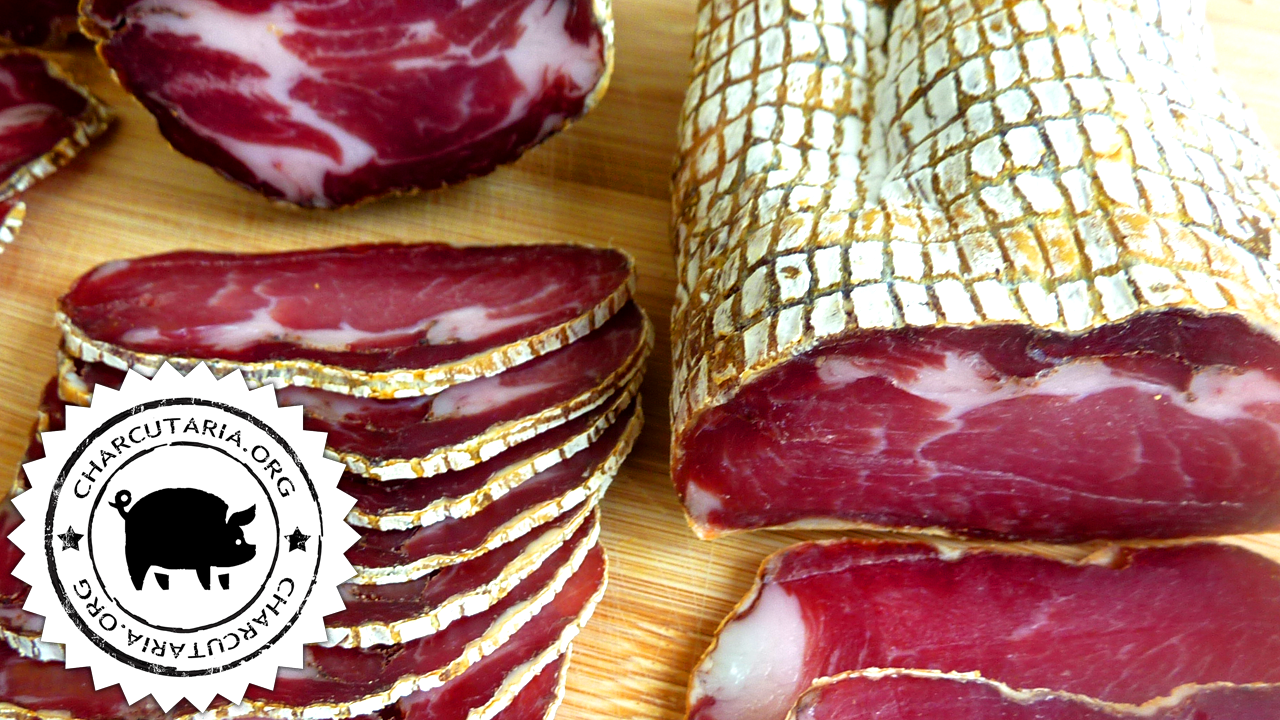
Copa é uma abreviação do italiano Capocollo, que por sua vez provém do latim “caput collum” e significa pescoço, pois tradicionalmente é utilizada a carne do pescoço suíno para fazer esta iguaria da charcutaria. Também pode ser feito com o lombo suíno, que tem bem menos gordura que o pescoço. Não é difícil fazer copa em casa, mas é trabalhoso pois leva bastante tempo e é preciso entender os processos envolvidos para ter segurança do que está sendo feito.
Nesta receita de copa utilizei o fundo bovino, que é uma tripa natural com ótimo controle de perda de umidade durante a maturação, além de ser uma superfície propícia para a proliferação da cultura de mofo penicillium, que é aplicada intencionalmente para cobrir a copa com uma camada de mofo benéfica, inibindo a proliferação de outros mofos indesejados.
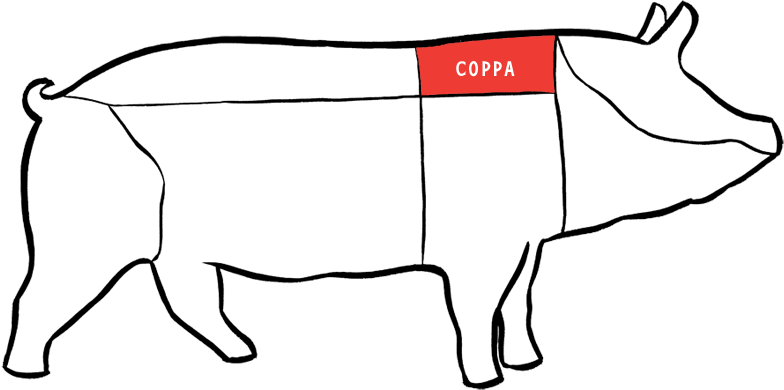
A carne utilizada para a produção da copa é a sobrepaleta ou pescoço suíno, localizado acima da paleta. O nome copa provém do italiano capocollo, que significa pescoço. Alternativamente é possível utilizar o lombo suíno, mas neste caso o produto é chamado de copa lombo. O lombo possui uma cobertura de gordura que pode ser removida para obter um produto mais magro.
Ingredientes da copa
- 1 kg sobrepaleta suína(copa);
- 22 g sal;
- 5 g açúcar;
- 2,5 g sal de cura 2 (6% de nitrito, 3% de nitrato e 93,75% de sal)
- 2 g alho em pó;
- 2 g pimenta Jamaica;
- 1 g pimenta preta;
1 g pimenta branca; - 0,5 g canela;
- 0,5 g cravo;
- 0,5 g noz-moscada;
0,1 g cultura starter bacteriana (bactérias láticas) – diluída em 100 ml de água filtrada; - 0,1 g cultura mofo penicilium nalgiovense – diluída em 100 ml de água filtrada;
- 1 unidade de fundo bovino.
Preparo da copa
- Adquira uma peça de sobrepaleta suína, que é a copa ou pescoço. Limpe, mantendo o máximo da gordura existente e removendo o tecido conjuntivo.
- Aplique a condimentação, exceto as culturas, massageando a carne;
- Armazene em um saco ou pote plástico na geladeira por 7 dias;
- Retire do refrigerador, escorra o excesso de líquido e, caso queira, lave a carne em água corrente;
- Dissolva a cultura starter em água filtrada, aguarde 10 minutos e borrife ou espalhe pela carne;
- Enxague o fundo bovino e deixe em água morna por 10 minutos;
- Coloque a carne dentro do fundo bovino, coloque em uma rede elástica para apertar e amarre as pontas com um barbante;
- Dissolva a cultura mofo penicillium nalgiovense em água filtrada, aguarde 10 minutos e borrife nas copas;
- Pendure em temperatura ambiente, ideal 25ºC, por 72 horas;
- Pendure em um ambiente com temperatura ideal de 12ºC, umidade em 75% a 85% e uma leve circulação de ar;
- Mantenha neste ambiente até a copa perder entre 35 e 45% do peso inicial.
Maturação
COPA 1
DIA | PESO | PERDA DE PESO
15/08 | 784 g | 0%
10/10 | 504 g | 36%
17/10 | 479 g | 39%
25/10 | 459 g | 42%
01/11 | 450 g | 43%
COPA 2
DIA | PESO | PERDA DE PESO
15/08 | 408 g | 0%
10/10 | 271 g | 34%
17/10 | 260 g | 37%
25/10 | 251 g | 39%
01/11 | 248 g | 40%

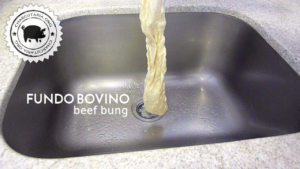
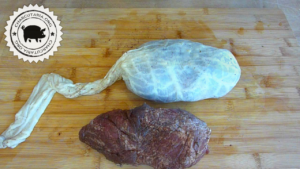
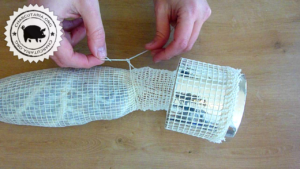
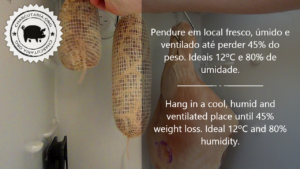
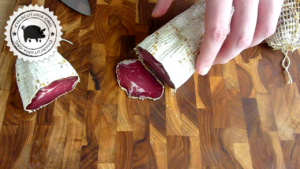
-
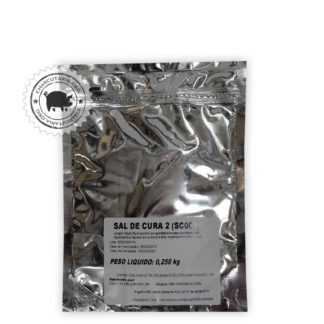 Sal de cura 2R$ 8,00
Sal de cura 2R$ 8,00 -
 Sal de cura 1R$ 8,00
Sal de cura 1R$ 8,00 -
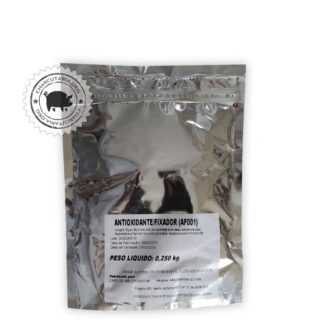 Antioxidante FixadorR$ 23,00
Antioxidante FixadorR$ 23,00 -
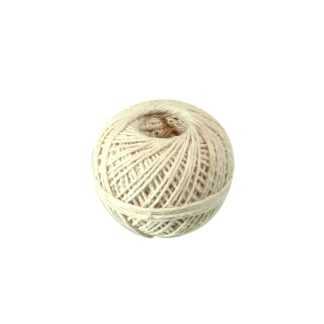 Barbante culinárioR$ 7,90
Barbante culinárioR$ 7,90 -
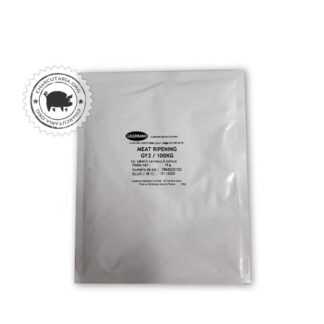 Cultura StarterO preço original era: R$ 69,90.R$ 59,90O preço atual é: R$ 59,90.
Cultura StarterO preço original era: R$ 69,90.R$ 59,90O preço atual é: R$ 59,90. -
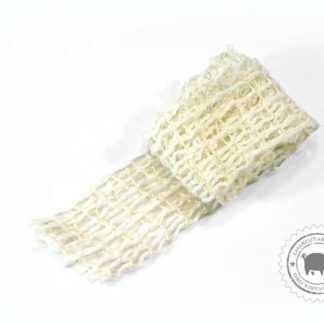 Rede elástica culinária 50mmR$ 15,00
Rede elástica culinária 50mmR$ 15,00 -
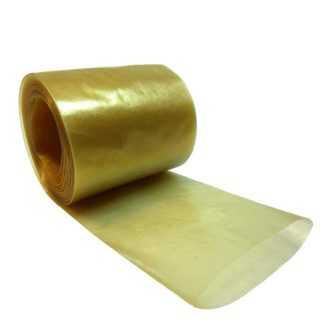 Tripa de colágeno 45mm rolo 5 metros salameR$ 25,00
Tripa de colágeno 45mm rolo 5 metros salameR$ 25,00 -
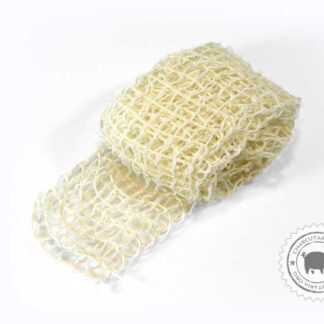 Rede elástica culinária 65mmR$ 18,00
Rede elástica culinária 65mmR$ 18,00 -
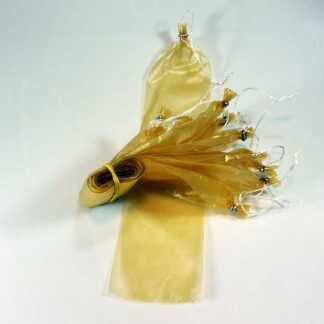 Tripa de colágeno salame 45mm 10 unidades amarradasR$ 22,00
Tripa de colágeno salame 45mm 10 unidades amarradasR$ 22,00 -
 Tripa de colágeno 80mm copa e salameR$ 29,90
Tripa de colágeno 80mm copa e salameR$ 29,90 -
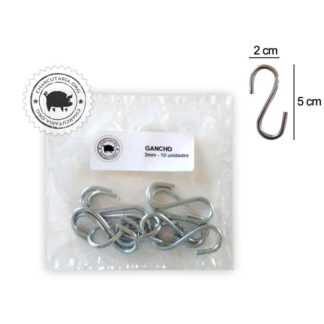 Gancho GalvanizadoR$ 12,00
Gancho GalvanizadoR$ 12,00 -
 Tripa de colágeno salame 50mm 10 unidades amarradasR$ 24,00
Tripa de colágeno salame 50mm 10 unidades amarradasR$ 24,00


Bom dia. Todos os ingredientes devem ser moídos? Obrigado.
Não é obrigatório, mas moído facilita a incorporação dos temperos pela carne.
Muito obrigado pela orientação. Adquiri todos moídos. Só no aguardo dos produtos adquiridos aí de vocês para dar continuidade 🤝🏻🤝🏻🙌🏻🙌🏻
Bom dia!!!!
Estou preparando algumas copas, sob orientação de vocês, que por sinal eu adoro as receitas e o atendimento. Não é necessário a lavagem das peças após o término da cura, né? No caso eu segui esta receita (https://charcutaria.org/receitas/receita-de-copa/#more-20037) Eu já coloquei algumas em colágeno e, outras em fundo bovino, com aplicação das culturas, etc… já deixei em temperatura ambiente para levar para câmara de maturação. Estou correto no processo?
Oi, Luiz. Não é necessário lavar, é opcional. Pode tirar da cura e já ensacar direto. Há quem prefira lavar para ter uma peça mais limpa, alguns lavam com vinho, pode também aplicar uma camada de páprica ou pimenta para fazer uma cobertura externa extra na carne antes de embutir, mas é tudo opcional, variando conforme o gosto e perfil do produto desejado. Pela descrição, seu processo está correto. Depois conte como ficou!
Eduardo, boa tarde. Primeiramente as suas dicas são muito importantes e têm me ajudado muito, obrigado!!
Recentemente comprei uma adega e adaptei em uma câmera de maturação, mas o problema é que aqui no RS o verão é muito intenso, e o termômetro dentro varia nos picos dos dias de calor entre 15ºc e 18ºc, já na noite consegue ficar entre 12ºc e 14ºc. Já a umidade consigo manter entre 65% e 75%. Será que essa “alta temperatura” de até 18ºc pode me fazer perder os alimentos? Estão curados com sal de cura 2 em geladeira e depois limpados e passado tempero com vinho pra ajudar na acidez.
Oi Eduardo. Risco há, mas como as noites estão mais frescas é muito provável que não haja problemas durante o processo. Sugiro que prossiga desta forma e vá avaliando rotineiramente o andamento da maturação.
Olá Eduardo, tudo bem?
Uma ajuda, por favor.
Desde 02/2020 já fiz 4 peças (12 x 800g) de copa e deram super certo. Ficaram ótimas.
Nesta última, iniciei o processo em 28/08/2020., fiz 3 peças de 900g cada.
Após concluído o processo (20/10) consumi uma peça que estava seca, com boa consistência e fácil de fatiar. Guardei na geladeira 2 peças restantes envoltas em película plástica .
Passados 60 dias (10/12), ao abrir uma segunda peça, ela estava sem consistência, com aparência de úmida, difícil de fatiar, bem “mole”. Inclusive, ao apertar a peça fechada, estava sem firmeza. Tenho ainda a terceira guardada que esta bem consistente ao aperto, bem firme.
Por favor, por que será que “reverteu” processo?
Como armazenar e por quanto tempo?
Desde já agradeço,
Carlo
Oi Carlos, as copas perderam quanto de peso no total, chegou a medir isso? Elas estavam firmes por inteiro e depois ficaram moles no meio ou estavam firmes por fora apenas? A forma correta de armazenar é essa mesmo, após concluído o processo, embalar a vácuo ou com algumas voltas no filme plástico e colocar na geladeira, duram, pelo menos, 90 dias.
Eduardo, perderam 42% de peso( Inicial: 752g; final: 442g),
Quando retirei o colágeno dessa peça e lavei, notei que estava mole na metade da peça.
A impressão que tive, baseando-me na peça #1 que consumi, foi que a peça estava consistente, firme, e depois amoleceu.
É possível?
Oi Carlos. Se a peça não estava mole e depois ficou, pode ser alguma contaminação que ocorreu durante o armazenamento. Verifique se houve alteração no odor. Caso negativo, talvez a peça já estava bem mais mole no centro e essa umidade migrou para a superfície da carne após embalar, neste caso não há problema em consumir. Isso geralmente ocorre quando o ambiente de maturação estava muito seco.
Oi Eduardo, desculpe a demora. Provavelmente sua resposta faz sentido.
Na verdade, quando abri a película, ela estava com uma lateral bem úmida e com um odor forte com notas de amônia. Deixei secando dois dias. O Odor sumiu. Esta semana vem abri-la e reporto aqui. Obrigado pelo retorno e super atenção.
Boa noite, no caso a cultura starter seria para qual finalidade?
Oi Mosconi. A cultura starter é composta por bactérias benéficas que fazem a fermentação do salame, reduzem o pH, auxiliando na proteção, além de atuar na melhora da coloração, aroma e sabor.
Boa tarde
Posso fazer a copa sem usar as culturas?
Sim, pode fazer sem as culturas, são opcionais para dar mais proteção e sabor.
Ok. Muito obrigado
Ola,, boa noite. Como vc usa a caixa plastica pra ela manter os 24 graus? Qdo fora esta 18 graus?
É preciso procurar na casa um local que mantenha a temperatura próxima dos 25ºC, próximo ao motor de uma geladeira, por exemplo. Caso esteja mais quente o ambiente, deixe menos tempo fermentando, 48 horas, por exemplo.
Olá Eduardo, boa tarde.
Seguindo su receita, já estou na terceira produção de copa. Ficaram ótimas.
Desta vez, resolvi sofisticar. Comprei a rede e também a folha de colágeno. Também decidi aplicar uma solução com fungos do queijo Brie. Raspei o queijo, fiz uma solução e esborrifei nas peças.
As peças estão na estufa e devem ficar prontas dentro de 60 dias. A aparência está ótima, bem branca. Fiquei com uma dúvida. Você Diz que as colônias de fungos não podem conter filamentos, nem outras cores se não branca. No meu caso existem pequenos filamentos porém com cobertura uniforme, homogênea, cheiro agradável, sem nenhuma outra coloração. Como seria a aparência da peça com a cultura mofo? Anexo imagem da peça. Poderia avaliar seu aspecto? Obrigado!
Oi Carlos. Parabéns pela copa, está bem bonita. Aparentemente está tudo certo, o mofo do brie é o penicillium cancidum, que tem um certo volume. O penicillium nalgiovense que é mais superficial. Se estiver similar ao que vê no queijo, então está tudo certo. Pela foto parece que sim.
Olá Eduardo, obrigado pelo retorno.
Foi muito prazeroso acompanhar a evolução da cura dessas peças. Deram super certo as suas dicas. Parabéns.
Agora, gostaria de arriscar fazer uma peça de dianteiro suíno, tipo Jamon. A propósito, como obter a mesma característica de cor e textura dos presuntos tipos Jamon ou Parma? mais claros, e tonalidade avermelhada? Por favor, Teria algum material para indicar? Desde já agradeço.
Oi Carlos, para o presunto cru, tipo jamon, parma ou serrano, o fundamental é seguir os processos da maturação, como é feito com a copa, por exemplo, ter bastante paciência e cuidados com a higiene. O ambiente tem que estar bem regulado, com temperatura e umidade boas durante todo o processo. Acompanhe regularmente e mantenha sempre limpo, sem fungos ou outras contaminações. Recomendo que não use ataduras ou outro invólucro que esconda a carne. Inicie com uma peça pequena, de frigorífico mesmo, de um local de confiança. Depois, conforme for ganhando confiança, pode adquirir peças maiores de traseiro suíno. Temos um post com muitas informações sobre a produção do presunto cru, dê uma lida: https://charcutaria.org/carnes/presunto-jamon-iberico-presunto-parma-presunto-serrano/
Perfeito!! Vou tentar fazer o Jamon.
Com relação aos fungos da copa, agora estão ganhando o aspecto semelhante à cobertura do Brie. Deu certo!
Obrigado pela ajuda e atenção!!
Olá Eduardo, tudo bem?
Minhas copas estão na fase final.
Uma dúvida, por favor. Posso consumi-la sem remover o colágeno e os fungos? A função do colágeno seria equilibrar/equalizar a perda da umidade?
Obrigado
Nesta receita foi utilizado o fundo bovino, que é natural e comestível. Eu prefiro remover, mas pode ser consumida. No colágeno há algumas comestíveis e outras que não são comestíveis pois são fabricadas com colágeno e outros compostos indigestos, precisa verificar com o fornecedor. As folhas/filmes de colágeno que vendemos para copa são comestíveis.
Sobre a função, sim, é isso mesmo, servem para controlar a perda de umidade e como barreira de proteção de contaminações do ambiente.
Será que dá para substituir a copa por picanha suína?
Oi Osvaldo. Pode substituir o corte sim, o processo vai funcionar da mesma forma. De forma geral o que mais impacta é a quantidade de gordura na peça. Cortes com menos gordura tendem a ficam menos untuosos e mais rígidos, mas vai do gosto de cada um.
Salve Eduardo… essa receita ficou somente 3 dias na geladeira para curar… as demais receitas ficam 7 dias e algumas até 15 dias… Explica pra gente o porque dessa diferença de período de cura inicial! Abraço.
Oi Julio, ficou 7 dias na geladeira essa copa. Pode ficar entre 7 e 15 dias. Dentro dessa margem não vai alterar o resultado final. Peça mais espessas podem ficar mais tempo enquanto peças mais finas incorporam tudo mais rapidamente. Abraço!
Me equivoquei… essa outra receita que menciona 3 dias:
https://charcutaria.org/receitas/copa-lombo-artesanal/
Verdade, essa copa lombo deixe apenas 3 dias na geladeira durante a primeira etapa. Ela ficou muito boa pelo que me lembro, não tive problemas com a distribuição dos temperos. Era uma peça relativamente pequena e a receita tinha bem pouco tempero, então acredito que por isso tenha agilizado o processo inicial na época.
Obrigado pelas informações.
Bom dia! Estou fazendo uma Copa mas minha camara de maturação deu problema e a temperatura foi pra 23º, Já está a alguns dias assim. Para tentar evitar perder a carne estou pensando em colocar para defumar até chegar a 72º
Na real já perderam entre 30-40% do peso, mas foi muito rápido, to pensando em defumar pela segurança alimentar também. O que acha? Não estão com a cara muito boa
Oi Felipe. Defumar é uma boa opção pois vai finalizar o produto mais rapidamente e a fumaça ajuda na conservação. Caso consiga também pode defumar a frio e deixar pendurado por mais alguns dias em temperatura ambiente até terminar de perder o peso.
Defumei a frio e consegui voltar para a geladeira a 12º por mais uns dias. Ficou bonita, mas contaminou no centro dela. Não é uma boa ideia comer né? Segue foto. (Não usei o mold)
Não apareceu a foto, envie para contato@charcutaria.org